The discount chains are tightening their grip on continental Europe. Could the same happen here?
John Wood
and Siân Harrington report
For mainstream retailers operating in the UK, Aldi’s announcement that it plans to spend £500m to add 200 stores may seem the least of their worries, but experience in the rest of Europe shows discounters consistently taking market share from other retailers.
According to the latest report from IGD, between 1991 and 2003 discounters steadily increased their share of the European grocery market every year, raising it from 9.3% to 17.5%. And this is not a phenomenon restricted to a few countries. Discounters grew their market share in 14 out of the 16 European states covered by the report, with only Italy and the UK bucking the trend.
However the market share in individual countries varies greatly, peaking at 48% in Norway and 37.4% in Germany and is at 4.5% in Greece and Ireland suggesting, says IGD, that structural factors in individual nations can influence where discounters do best.
Legislative frameworks that place restrictions on larger stores play into the hands of the discounters. But where the larger stores can compete hard on price, one of the discounters’ key weapons can lose its potency.
Report author Rachael Aggarwal says in the UK mainstream retailers reacted quickly with saver lines. “Tesco and Asda kept the price agenda going and exploited it,” she says.
The clear leaders in the European discount sector, both of whom are trying to make inroads into the UK, are Aldi and Lidl with sales of E30.93bn and E18.9bn respectively. Other prominent players are Tengelmann’s Plus, Rewe’s Penny and Carrefour’s Dia formats. Carrefour is number three in terms of store numbers, but its lower average store size means it is ranked fifth in turnover.
Germany is the most important market in Europe for
discounters. They represent 23% of the market in terms of store numbers but this translates into 37.4% of sales worth E53bn, and Aggarwal predicts market share will rise to 42% by 2010.
Aldi is clear leader in the German discount channel with sales more than double its nearest rival Lidl. Aggarwal says it has achieved great customer loyalty and attracted customers from across the demographic groups by blending the lowest prices with a reputation for quality.
But Lidl is aggressively challenging Aldi, she adds. Aldi is reaching saturation with 87% of German households within 15 minutes’ drive of one of its stores. Lidl has been expanding, opening three RDCs this year and with two more opening next year. This will enable it to open 1,000 further stores by 2010, taking its total to 3,500.
In addition Lidl is challenging the foundation of Aldi’s reputation, taking on its leading position on low prices and forcing it to make price reductions on its own labels.
In the rest of Europe, Lidl has been far more successful than Aldi, trebling its sales between 1996 and 2003 with an annual increase of 17% per annum, and Aggarwal believes it is likely to overtake Aldi. It operates in 18 markets - Hungary is the third it has entered this year - and Aggarwal believes it will push into Denmark, Switzerland, Luxembourg, Estonia, Latvia, Lithuania, Slovenia, Croatia and Turkey.
As Lidl goes head to head with Tesco in countries such as Hungary, one expert is predicting the discount formula will prove superior. Jürgen Elfers, financial analyst and head of European retail research at Commerzbank, Germany, believes its strong business model beats UK supermarkets on a number of financial measures.
Compound annual growth rate calculations by Commerzbank show that while Tesco is expanding at a faster rate than Lidl in terms of selling space, Lidl achieves higher top line sales momentum than Tesco.
And Tesco and Morrisons need three to four times the capital expenditure to make the same return on capital employed as Aldi. In other words, doing business is more expensive for Tesco and Morrisons.
Commerzbank calculations show that when analysing the operations in their native countries, Aldi has the highest earnings before interest, taxes, depreciation and amorisation (EBITDA) at 6.3% compared with Tesco and Morrisons at 6.1% and 6% respectively. They, however, have higher EBITDAs than Carrefour and Casino in France and Asda in the UK. “The fast lane is for food discounting,” Elfers told a conference in Prague. “Discounters have high sales per SKU and low operating risk.”
Work done by McKinsey in Germany last year showed Aldi took a disproportionately high market share for the low number of lines it carries. In fruit juice, for example, the two Aldi businesses in Germany, Aldi Süd and Aldi Nord, carried 29 and 17 lines respectively compared with an average supermarket’s 128 lines. However, together the Aldi businesses have a 29% share of the fruit juice market in Germany. “Most supermarkets are well over-stocked,” says Elfers. “Everyone needs to slim down.”
He points to the fact that a slimline range does not mean less choice. Commerzbank research undertaken in Frankfurt found that while Aldi Süd carried only 57 SKUs in sliced meat compared to Hit’s 279, Minimal’s 249 and Tenglemann’s 103, one in four lines on offer had a fat content of 3g or less - enabling shoppers to make a healthy choice. “Range variety implies low turnover per SKU, unfavourable capital-employed levels and, subsequently, higher price points for exotic products,” says Elfers.
He adds that the quality of comparable branded products is the benchmark for Lidl and Aldi’s own brands. “No quality compromises are made in terms of ingredients, packaging and the production process for a selected range.”
The strong financial model of the discounters results in an “extraordinarily compelling” value proposition, Elfers believes. And thus across European retailing, he says: “The fight is not for the icing on the cake. It is for the cake itself.”
John Wood
and Siân Harrington report
For mainstream retailers operating in the UK, Aldi’s announcement that it plans to spend £500m to add 200 stores may seem the least of their worries, but experience in the rest of Europe shows discounters consistently taking market share from other retailers.
According to the latest report from IGD, between 1991 and 2003 discounters steadily increased their share of the European grocery market every year, raising it from 9.3% to 17.5%. And this is not a phenomenon restricted to a few countries. Discounters grew their market share in 14 out of the 16 European states covered by the report, with only Italy and the UK bucking the trend.
However the market share in individual countries varies greatly, peaking at 48% in Norway and 37.4% in Germany and is at 4.5% in Greece and Ireland suggesting, says IGD, that structural factors in individual nations can influence where discounters do best.
Legislative frameworks that place restrictions on larger stores play into the hands of the discounters. But where the larger stores can compete hard on price, one of the discounters’ key weapons can lose its potency.
Report author Rachael Aggarwal says in the UK mainstream retailers reacted quickly with saver lines. “Tesco and Asda kept the price agenda going and exploited it,” she says.
The clear leaders in the European discount sector, both of whom are trying to make inroads into the UK, are Aldi and Lidl with sales of E30.93bn and E18.9bn respectively. Other prominent players are Tengelmann’s Plus, Rewe’s Penny and Carrefour’s Dia formats. Carrefour is number three in terms of store numbers, but its lower average store size means it is ranked fifth in turnover.
Germany is the most important market in Europe for
discounters. They represent 23% of the market in terms of store numbers but this translates into 37.4% of sales worth E53bn, and Aggarwal predicts market share will rise to 42% by 2010.
Aldi is clear leader in the German discount channel with sales more than double its nearest rival Lidl. Aggarwal says it has achieved great customer loyalty and attracted customers from across the demographic groups by blending the lowest prices with a reputation for quality.
But Lidl is aggressively challenging Aldi, she adds. Aldi is reaching saturation with 87% of German households within 15 minutes’ drive of one of its stores. Lidl has been expanding, opening three RDCs this year and with two more opening next year. This will enable it to open 1,000 further stores by 2010, taking its total to 3,500.
In addition Lidl is challenging the foundation of Aldi’s reputation, taking on its leading position on low prices and forcing it to make price reductions on its own labels.
In the rest of Europe, Lidl has been far more successful than Aldi, trebling its sales between 1996 and 2003 with an annual increase of 17% per annum, and Aggarwal believes it is likely to overtake Aldi. It operates in 18 markets - Hungary is the third it has entered this year - and Aggarwal believes it will push into Denmark, Switzerland, Luxembourg, Estonia, Latvia, Lithuania, Slovenia, Croatia and Turkey.
As Lidl goes head to head with Tesco in countries such as Hungary, one expert is predicting the discount formula will prove superior. Jürgen Elfers, financial analyst and head of European retail research at Commerzbank, Germany, believes its strong business model beats UK supermarkets on a number of financial measures.
Compound annual growth rate calculations by Commerzbank show that while Tesco is expanding at a faster rate than Lidl in terms of selling space, Lidl achieves higher top line sales momentum than Tesco.
And Tesco and Morrisons need three to four times the capital expenditure to make the same return on capital employed as Aldi. In other words, doing business is more expensive for Tesco and Morrisons.
Commerzbank calculations show that when analysing the operations in their native countries, Aldi has the highest earnings before interest, taxes, depreciation and amorisation (EBITDA) at 6.3% compared with Tesco and Morrisons at 6.1% and 6% respectively. They, however, have higher EBITDAs than Carrefour and Casino in France and Asda in the UK. “The fast lane is for food discounting,” Elfers told a conference in Prague. “Discounters have high sales per SKU and low operating risk.”
Work done by McKinsey in Germany last year showed Aldi took a disproportionately high market share for the low number of lines it carries. In fruit juice, for example, the two Aldi businesses in Germany, Aldi Süd and Aldi Nord, carried 29 and 17 lines respectively compared with an average supermarket’s 128 lines. However, together the Aldi businesses have a 29% share of the fruit juice market in Germany. “Most supermarkets are well over-stocked,” says Elfers. “Everyone needs to slim down.”
He points to the fact that a slimline range does not mean less choice. Commerzbank research undertaken in Frankfurt found that while Aldi Süd carried only 57 SKUs in sliced meat compared to Hit’s 279, Minimal’s 249 and Tenglemann’s 103, one in four lines on offer had a fat content of 3g or less - enabling shoppers to make a healthy choice. “Range variety implies low turnover per SKU, unfavourable capital-employed levels and, subsequently, higher price points for exotic products,” says Elfers.
He adds that the quality of comparable branded products is the benchmark for Lidl and Aldi’s own brands. “No quality compromises are made in terms of ingredients, packaging and the production process for a selected range.”
The strong financial model of the discounters results in an “extraordinarily compelling” value proposition, Elfers believes. And thus across European retailing, he says: “The fight is not for the icing on the cake. It is for the cake itself.”



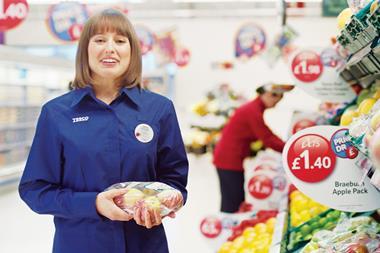

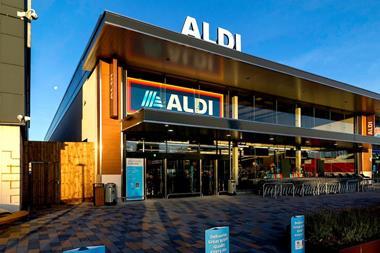
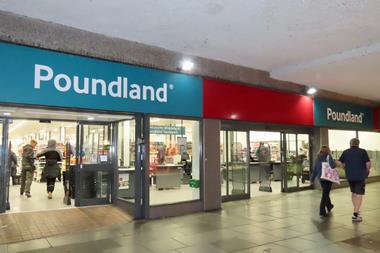

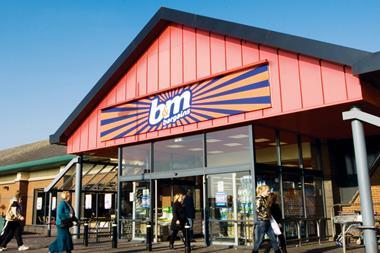

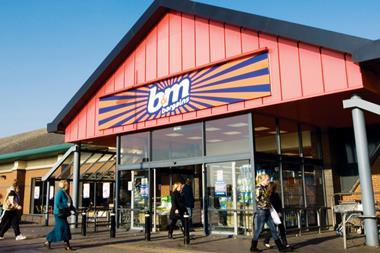
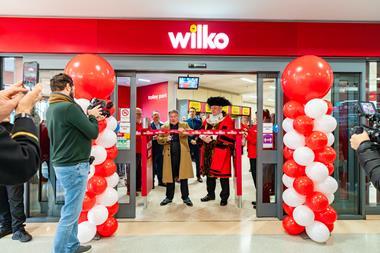

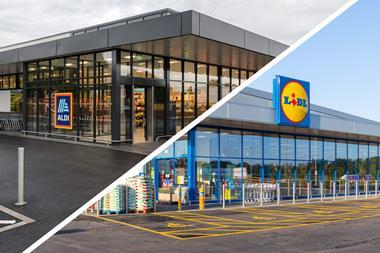

No comments yet